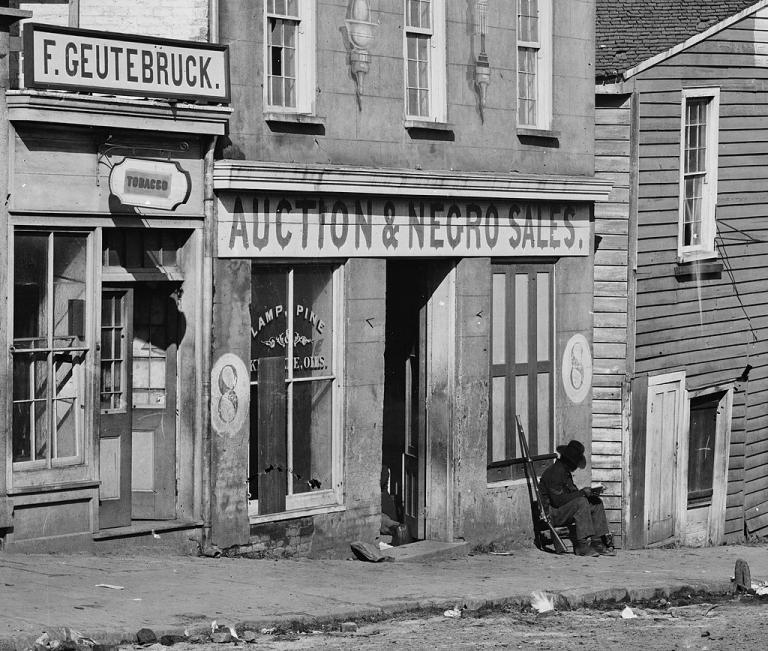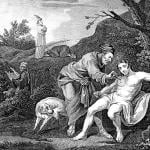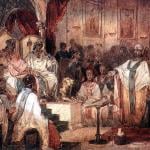Recently Catholic News Agency published an article about the potential cause for canonization of Sr. Thea Bowman, a Franciscan Sister of Perpetual Adoration, and the first Black woman ever to address a bishops’ conference. Sr. Thea was a prophetic voice for racial justice, so it was fitting that the tagline for the article was a quotation of hers: “black is beautiful!”
“Don’t read the comments” is a mental-health mantra for any writer who publishes online, but sometimes it’s worth risking one’s peace of mind to see what the readers of Catholic publications are thinking. In this case, while many commenters were appreciative and respectful of the life and work of such an admirable woman, in other places reading the comments meant diving into a cesspool of polite racism and white fragility.
“Black is beautiful!” especially did not go over very well with many of the commenters. Here’s a taste of what some had to say (syntax, alas, unedited):
Catholics don’t need to talk about any skin color, political correctness rhetoric! That’s not Catholic! We know better!
This is not a beauty contest…..
“Black is beautiful”? What does that have to with anything?
Black is no longer beautiful for its replaced with hate…Look around and see what’s on the internet. all I see are black woman spitting out hate.. wake up.
It is the heart and soul that matters and she was beautiful in all ways. One thing I love in the Catholic Church is that black people have always been welcomed and loved. Hence the Church is growing in Africa.
Let me just jump on that last one there. Because I keep hearing this assertion that the church has always been a wonderful advocate for racial justice. Last month I was informed by a non-Jewish person that the institutional church had always stood up for the rights of Jews – a beautiful fantasy one could sustain if one were very careful never to read history.
And now, the idea that the church has always welcomed and loved black people: would that it were so. Would that church leaders hadn’t often turned a blind eye to the slave trade. Remember reading Gone With the Wind? The O’Hara family was Catholic, and gathered nightly for a family rosary, with all their slaves gathered around them. What if Catholic slave traders and slave owners had been excommunicated? But in spite of our supposed wisdom and justice, it took our leaders until 1965 – at Vatican II – to come to the realization that yes, slavery is really always bad all the time, not something to tiptoe around. Prior to that, the church seems to have gone out of its way to make things as easy as possible for rich slave-owners (poor pregnant unmarried women, not so much).
Would that Catholic missionaries going to Africa had approached the many diverse cultures there with the respect owed to them. Would that today politely racist Catholics would refrain from tokenizing African religious to prove just how racist we aren’t.
I keep thinking about Lillian Vogl’s article about “two Catholic churches,” and it’s especially relevant in this case. On one hand I see the church founded by Jesus, the man who was willing to sit with the Samaritan woman by the well – the church in which St. Paul stated “in Christ there is neither Jew nor Greek, slave nor free.” I see the French Jesuit missionaries who approached the native peoples of the Americas with such love and respect. I see Maximilian Kolbe, martyred by white supremacists, and St. Romero, champion of the brown poor. I see great Christian revolutionaries such as Dorothy Day, and joyful reformers such as the black and beautiful Sr. Thea.
And then, up against them, I see something that is not of Christ at all. And here, yes, we have a racism problem in the church, partially because we have a racism problem in the broader culture, and apparently standing up against cultural evils is something powerful religious figures prefer to do only when convenient.
To reiterate just how much penance the institutional church needs to do, I would like to share this timeline, from Global Black History (linked to also above):
| YEAR | CHURCH’S POSITION |
| 362 AD | The local Council at Gangra in Asia Minor excommunicates anyone encouraging a slave to despise his master or withdraw from his service. (Became part of Church Law from the 13th to 20thcenturies). |
| 354- 430 AD | St. Augustine teaches that the institution of slavery derives from God and is beneficial to slaves and masters. |
| 650 AD | Pope Martin I condemns people who teach slaves about freedom or who encourage them to escape. |
| 1179 AD | The Third Lateran Council imposes slavery on those helping the Saracens. |
| 1226 AD | The legitimacy of slavery is incorporated in the Corpus Iuris Canonici, promulgated by Pope Gregory IX which remained official law of the Church until 1913. Canon lawyers worked out four “just titles” for holding slaves: slaves captured in war, persons condemned to slavery for a crime; persons selling themselves into slavery, including a father selling his child; children of a mother who is a slave. |
| 1224- 1274 AD | St.Thomas Aquinas defends slavery as instituted by God in punishment for sin, and justified as being part of the ‘right of nations’ and natural law. Children of a slave mother are rightly slaves even though they have not committed personal sin! |
| 1452 AD | Pope Nicholas V issued the papal bull Dum Diversas on 18 June, 1452. It authorizes (King) Alfonso V of Portugal to reduce any “Saracens (Muslims) and pagans and any other unbelievers to perpetual slavery.
The same pope wrote the bull Romanus Pontifex on January 5, 1455 to the same Alfonso. As a follow-up to the Dum diversas, it extended to the Catholic nations of Europe dominion over discovered lands during the Age of Discovery. Along with sanctifying the seizure of non-Christian lands, it encouraged the enslavement of native, non-Christian peoples in Africa and the New World. |
| 1493 AD | Pope Alexander VI authorizes the King of Spain to enslave non-Christians of the Americas who are at war with Christian powers. |
| 1494 AD | Pope Alexander VI, in the 1494 Treaty of Tordesillas, divides the known New World between the two countries. As there was a need to locate a group to work in areas where the supply of indigenous labor was insufficient, to sustain their colonies, Spain and Portugal imported Africans. |
| 1500- 1850 AD | Twelve million Africans arrived in the Americas to toil as slaves. The vast majority of these slaves worked in the Catholic colonies of Spain and Portugal |
| 1548 AD | Pope Paul III confirms the right of clergy and laity to own slaves |
| 1866 AD | Pope Pius IX declares:
Slavery itself, considered as such in its essential nature, is not at all contrary to the natural and divine law, and there can be several just titles of slavery, and these are referred to by approved theologians and commentators of the sacred canons … It is not contrary to the natural and divine law for a slave to be sold, bought, exchanged or given”. |
image credit: https://en.wikipedia.org/wiki/Slavery_in_the_United_States#/media/File:Slave_Market-Atlanta_Georgia_1864.jpg













